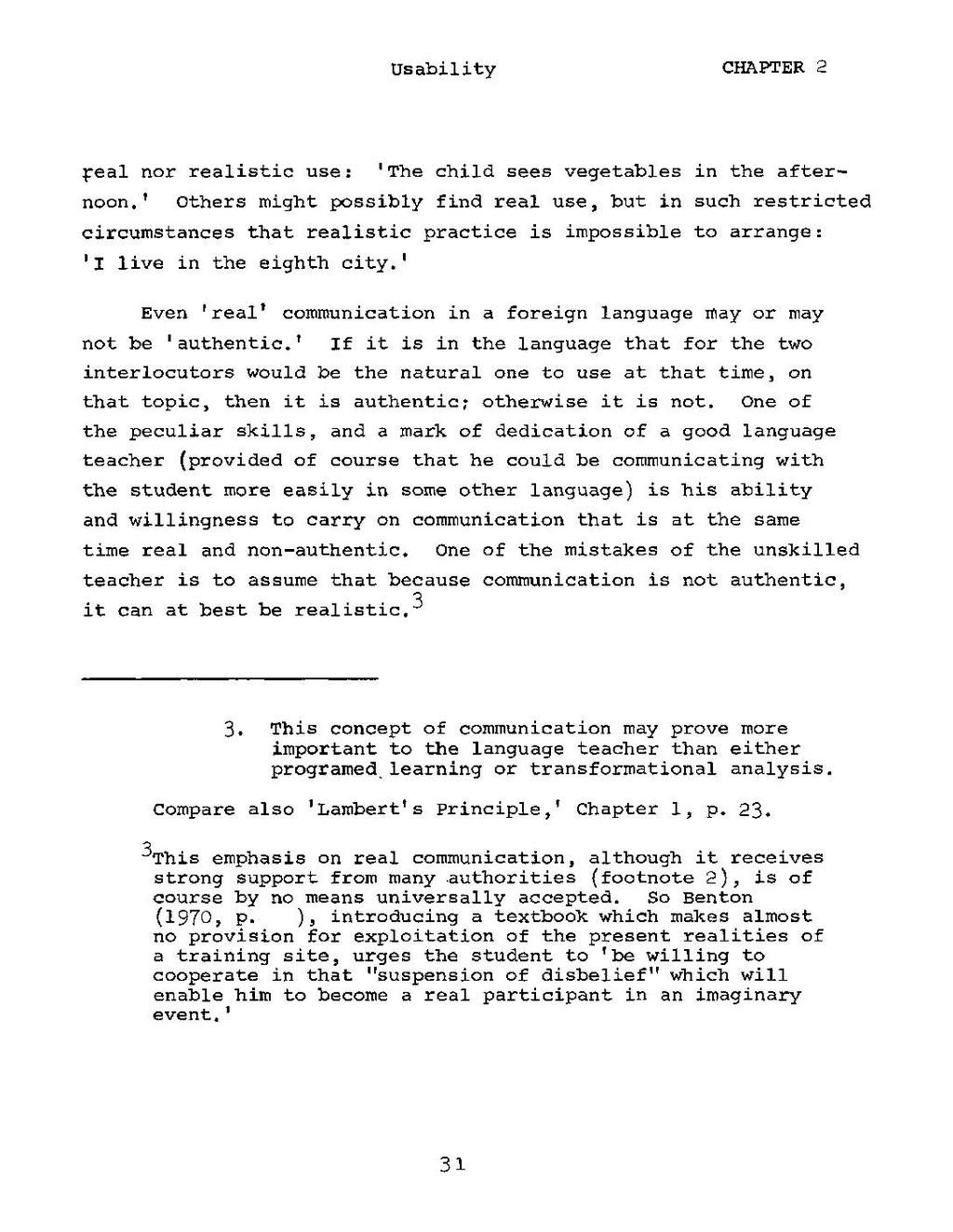real nor realistic use: 'The child sees vegetables in the after-noon.' Others might possibly find real use, but in such restricted circumstances that realistic practice is impossible to arrange: 'I live in the eighth city.'
Even 'real' communication in a foreign language mayor may not be 'authentic.' If it is in the language that for the two interlocutors would be the natural one to use at that time, on that topic, then it is authentic; otherwise it is not. One of the peculiar skills, and a mark of dedication of a good language teacher (provided of course that he could be communicating with the student more easily in some other language) is his ability and willingness to carry on communication that is at the same time real and non-authentic. One of the mistakes of the unskilled teacher is to assume that because communication is not authentic, it can at best be realistic.[1]
- This concept of communication may prove more important to the language teacher than either programed,learning or transformational analysis.
- ↑ This emphasis on real communication, although it receives strong support from many .authorities (footnote 2), is of course by no means universally accepted. So Benton(1970, p.), introducing a textbook which makes almost no provision for exploitation of the present realities of a training site, urges the student to 'be willing to cooperate in that "suspension of disbelief" which will enable him to become a real participant in an imaginary event.'
Compare also 'Lambert's principle,' Chapter 1, p. 23.
31
